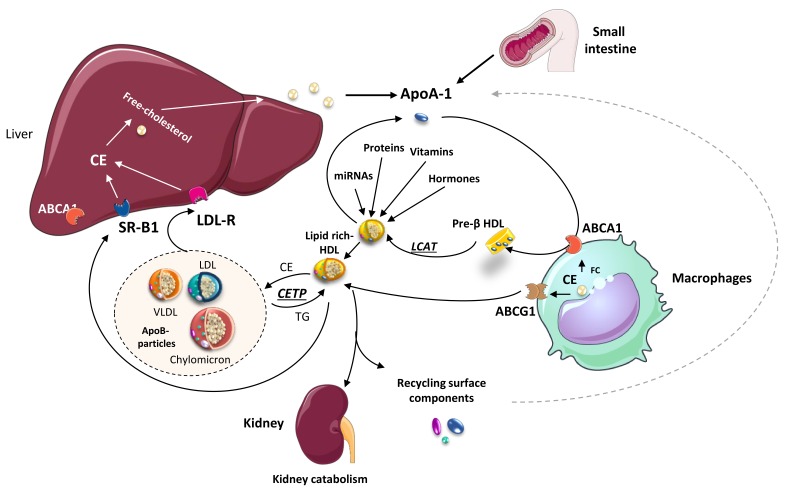Figure 2.
HDL biogenesis and its role in lipid metabolism. Nascent HDL particles (Pre-β HDL), formed from Apo-I secreted either by the liver or the thin intestine, uptake cholesterol from different cell types, including macrophages (via ATP binding cassette transporter A1; ABCA1). Concomitantly, other molecular constituents, including miRNAs, proteins, hormones, and vitamins, become incorporated into HDL-particles. Free cholesterol within the HDL is further transformed into cholesterol esters (CE) by the enzyme Lecithin: Cholesterol Acyltransferase (LCAT). Lipid-rich (mature) HDL particles exchange lipids with ApoB-containing particles [(chylomicrons, very-low-density lipoproteins (VLDL), low-density lipoproteins (LDL)] through cholesteryl ester transfer protein (CETP) enzyme and with macrophages via ABCG1. Finally, the liver receptors scavenger receptor (SR)-B1 and LDL-R transfer HDL lipids to the liver, ApoA1 is catabolized in the kidneys, and the remaining surface constituents are recycled.

